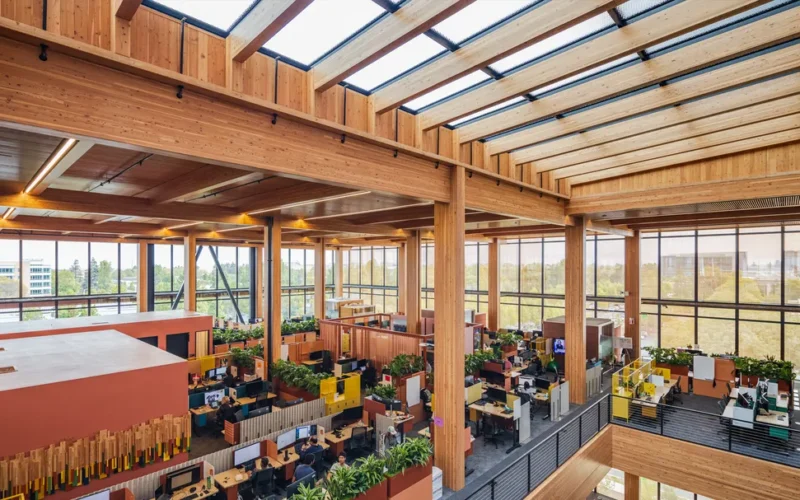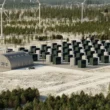Google has unveiled its latest office at 1265 Borregas Avenue in Sunnyvale, California, embodying its commitment to sustainable design and employee wellbeing. The state-of-the-art building is Google’s first to be constructed using mass timber, an innovative engineered wood that layers and laminates smaller pieces of wood to create large beams and walls.
Mass timber not only boasts regenerative properties but also absorbs and stores carbon through sequestration, making it a sustainable alternative to steel and concrete. The 1265 Borregas building is projected to achieve 96% fewer embodied carbon emissions compared to traditional structures, with all timber sourced responsibly from Forest Stewardship Council (FSC)-certified forests.
The building is also all-electric and features solar panels, generating renewable energy on-site, supporting Google’s ambitious goal to achieve net-zero emissions and carbon-free energy operations 24/7 by 2030.
1265 Borregas incorporates biophilic design principles, emphasising the connection between nature and the workplace. Exposed timber, abundant natural light, and sweeping views of Northern California foster a productive and calming environment. Automatic wooden blinds and an underfloor air system enhance comfort while reducing energy use.
Mass timber’s pre-fit construction approach reduced noise, traffic, and waste during the building process, setting a new benchmark for construction efficiency. Around the site, three acres of pollinator-friendly native plants have been added, promoting biodiversity. Public artwork on the northeast corner pays homage to Atari, the historic occupant of the site.
Certified as a LEED Platinum building, 1265 Borregas represents Google’s vision for blending sustainability, employee wellbeing, and construction efficiency. It’s a model for the future, and Google hopes it will inspire the industry to adopt similar approaches for a more sustainable tomorrow.





















